


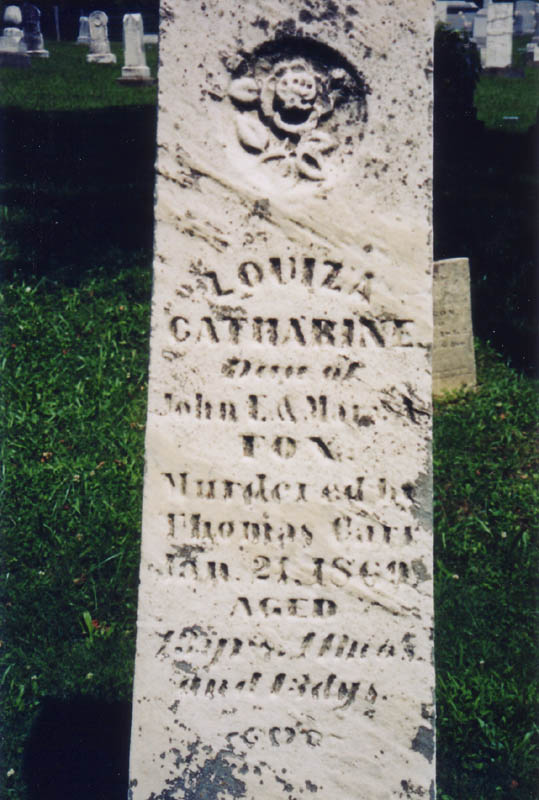
Louiza was being courted by Thomas D. Carr, a "notorious character" and local coalminer, when she was still an adolescent. He had met her when she'd come to work as a domestic servant at the home of Carr's employer, Alex Hunter. He wanted to marry her, and her parents apparently consented, but Louiza's parents later broke their promise and the wedding was cancelled. Their minds were changed by Carr's reputation and propensity for violence, as well as the fact that he was much older than she.
Thomas Carr had been born in Sugar Hill, West Virginia--just east of Wheeling--on March 6, 1846. He enlisted in the 16th Ohio Volunteer Infantry at the age of fifteen by lying on his papers and saying he was four years older. He hadn't seen much action when he was captured later that year at Cheat Run, WVA, and held for a time in a Confederate POW camp. He was released in time to serve a little more before the end of the war, after which he lived and worked in Tuscarawas and Harrison Counties.
Carr was enraged when he learned that Louiza wanted to end their engagement, so on the night of January 21, 1869, he waited behind a fence corner on the road she took home from work. Eventually she walked by with her little brother Willy. Carr approached them and sent Willy on home while he talked to his ex-fiance. He kissed her goodbye, then slit her throat with a razor and stabbed her fourteen more times. He finally deposited her body in a ditch nearby. That night he spent in a coal bank while the Foxes, alerted by Willy (who saw the whole thing from a distance), got a posse together to search for him.
Carr made a halfhearted suicide attempt the next morning by slashing his own throat and even trying to shoot himself, but it wasn't enough to do the job. When he was found and arrested his wounds were treated.
An "intensely exciting" five-day trial ensued, conducted before Judge Way. Carr, who was apparently a pretty scary character, laughed when his death sentence was read aloud and said he did "not care a damn if it was to be tomorrow." In his sentencing, the judge described Carr as "petulant, ill-natured, irritable, of a nervous temperament and possessed of a heart fatally bent on mischief."
On March 8, 1870, while waiting to be hung, Carr made a full confession, which included the admission that he'd murdered fourteen other people in his life and attempted at least five. If true this makes him a fairly prolific serial killer, but it's presumed that he was exaggerating to some degree. His confession was published in pamphlet form and widely read throughout this part of the state. He checked on the gallows as it was being built, doing acrobatics on it. Interestingly, before his death sentence was carried out, he entertained two teenage girls who had big crushes on him--murder groupies. He gave them copies of his picture and rings and told them they would meet in heaven. His execution took more than a year to happen because of "a legal technicality" which earned him a stay. Finally, on March 24, 1870, Thomas D. Carr became the first person legally hung in Belmont County.
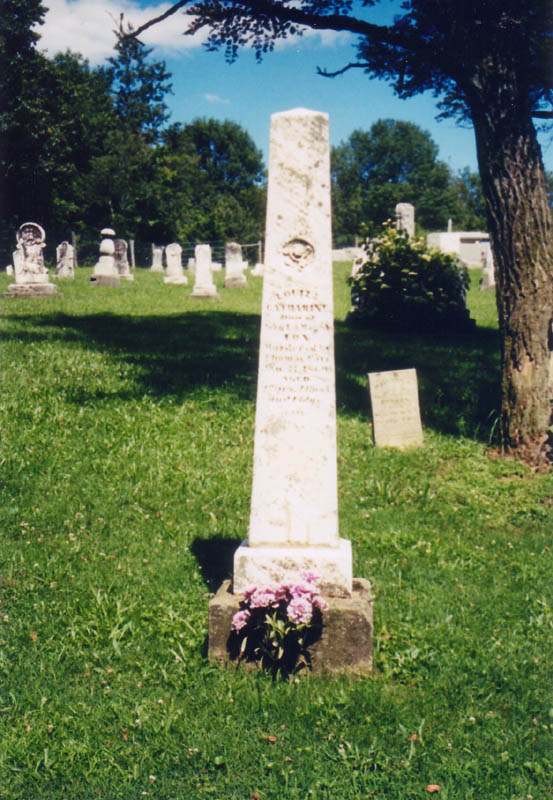
Her body lies in Salem Cemetery, a pre-Civil War cemetery in the middle of Egypt Valley with several legends of its own. It's said that unmarked graves there belong to witches. Another legend states that if you walk around the graveyard six times, you will disappear. To see more of the Salem graveyard, click here.
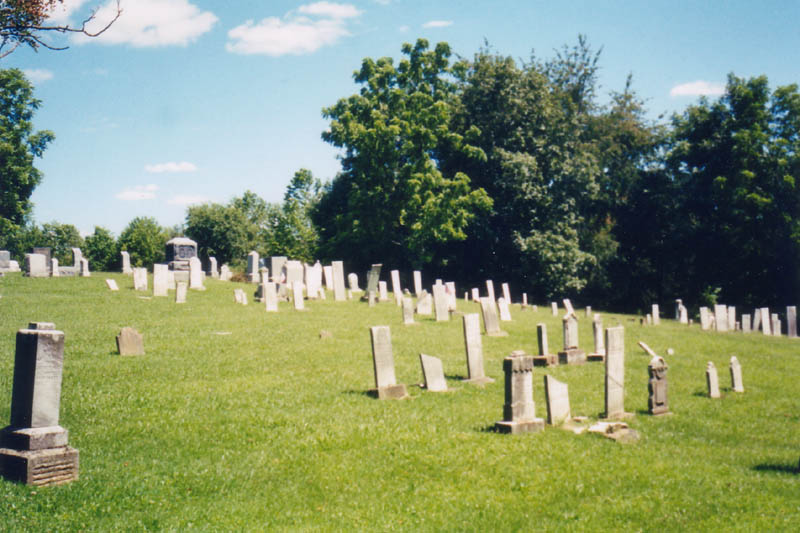
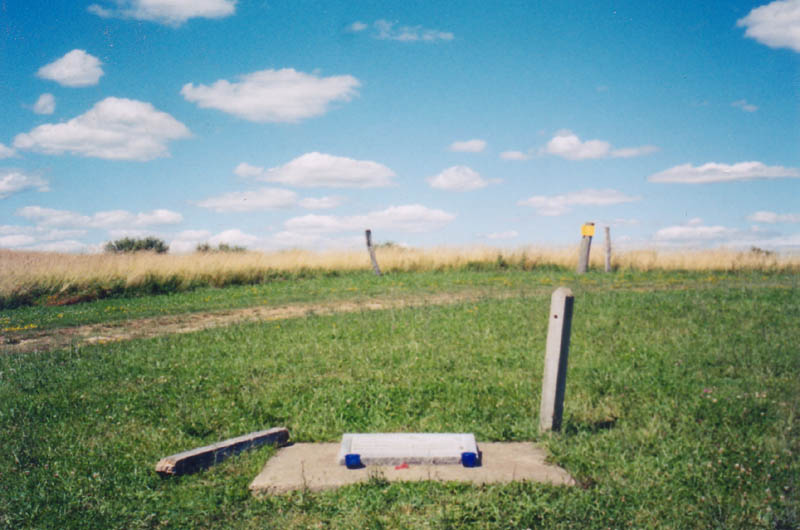
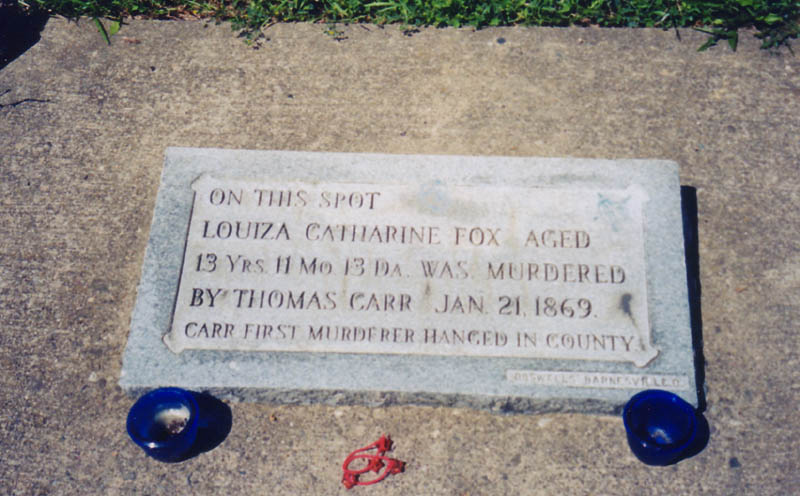
People visit this place in the hope of contacting Louiza Fox herself, or perhaps Thomas Carr, whose spirit is also said to walk. He was buried on the grounds of the county courthouse in St. Clairsville, where he was executed, but that hasn't stopped him from visiting the place where he spent the final days of his murderous life.
As horrific as the Carr-Fox murder story is, it's not the only ghostly occurrence associated with Egypt Valley. Close to the murder plaque is the site of another ghostly occurrence: a phantom house. It appears to visitors with seven red candles in the windows, but always fades away when approached.
Other stories center around a cemetery which borders the preserve near a lake with a steep ledge--Circle Cemetery. Supposedly a dozing truck driver wrecked into this graveyard and lost his arm when his truck rolled on it. Although the trucker lived, his arm was never found, and the story says that the trucker's severed arm now roams the cemetery, apparently using its fingers as legs like Thing from the Addams Family. You can hear its skittering walk on still nights. You might also hear the "devil dogs," which are not U.S. Marines but rather actual evil canines which may or may not guard the cemetery. I wonder how the severed arm avoids getting picked up by one of the devil dogs.


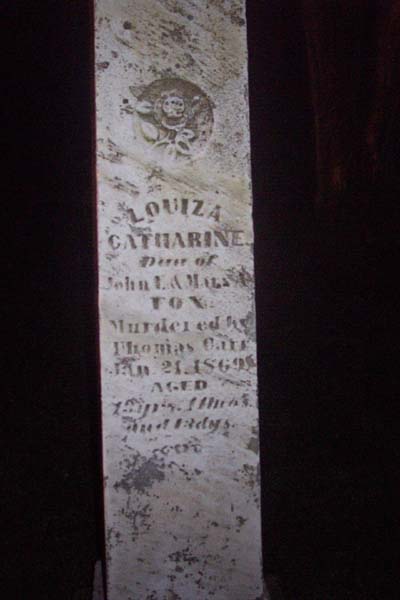
Caldwell, J.A. History of Belmont and Jefferson Counties, Ohio. Wheeling, WV: Historical Publishing Co., 1880.
McKelvey, A.T. 1903 Centennial History of Belmont County, Ohio. Chicago: Biographical Publishing Co., 1903.